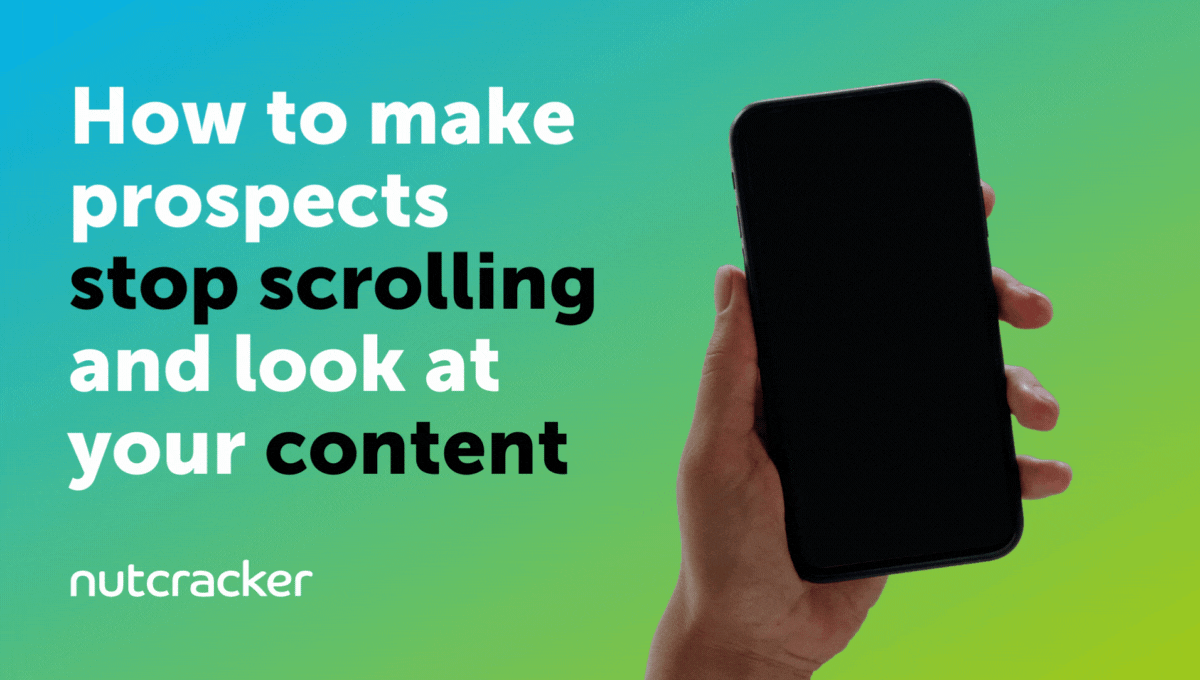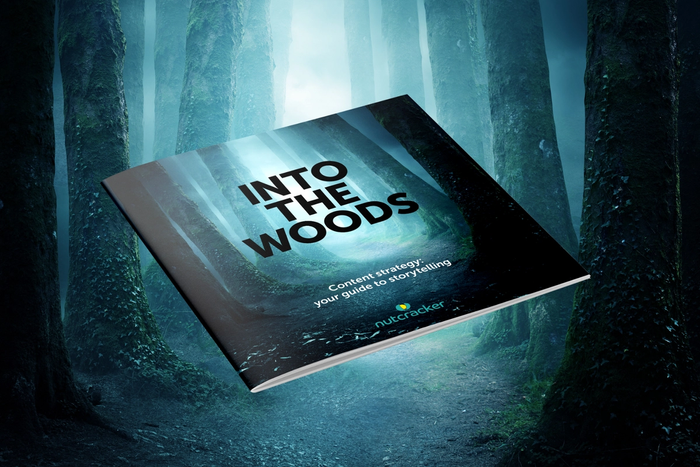Content Marketing & SEO
How to make prospects stop scrolling and look at your content
Social media uses the same trick as a slot machine — repetitive human action leads to a variable reward, and our brains love that. They’re addictive because you never know what one more pull of the lever or one swipe of the thumb is going to get you: we’re hardwired to respond to it.
It’s well known that social media is designed to suck you into that rabbit hole and keep you moving on to the next piece of content for as long as possible, using the dopamine rush to addict users to the scroll.
When you’re trying to grow a brand through social media marketing, that’s the reality that you’re working with. It’s a blessing in the sense that your content will be somewhere your audience is likely to spend a lot of time. It’s a curse in the sense that they’re conditioned to scroll past and move on, when what you want is engagement and action.
However, if Twitter, Instagram, TikTok, Facebook, LinkedIn, and YouTube use psychology to keep people scrolling, you can use psychology to stop them.
Here’s how to make people pause when a site or an app is designed to keep them moving.
First, be part of the crowd…
In support of their dopamine-based slot machine mechanisms, social media all use algorithms to keep users interested, determining what appears on a user’s content feed based on the sort of thing they’ve engaged with and the accounts they’ve followed. So, if you’ve ‘liked’ a few posts about sports cars, and you follow an account called ‘Classy Chassis’, the algorithm will make sure you get more sports car content.
Apply that principle to your business. You want your content to be fed to people who have an interest in what you offer. Playing the algorithm is an art and science that people can and do devote huge time and energy to — each social media has its own algorithm, and none are transparent about how they work, so taking advantage of them is a little like alchemy. However, apply two basic principles and you’ll be off to a great start:
- Post content regularly — daily if you can
- Research the hashtags that you use and choose the most popular and relevant ones to add to your posts
- Once you’ve got your content on the menu, you need your prospect to choose it.
… then stand out
Every social media platform is taking advantage of the dopamine-seeking instinct. As the user browses, they’re thinking subconsciously that any scroll could be the one that delivers something valuable or exciting.
Make your post that something.
Of course, offering something useful or interesting is fundamental, but without the right delivery, it won’t get anyone to pay attention. Again, the design of social media images could take a book-length discussion, but thanks to evolution, there are three things that humans are hardwired to notice, which you can bear in mind when designing your social media.
Faces
It only takes three dots to make people see a face — anything in a ‘two eyes and mouth’ arrangement makes us recognise an expression, even if there isn’t one to see. It’s because we evolved to notice predators and interpret our peers’ emotions, so anything remotely facial catches our eye.
If your content features a face, whether it’s literal or simply suggested, a lot of people will pause because their instinct wants them to interpret it.
Colour
Our primordial ancestors needed to efficiently notice fruit, and distinguish the edible from the unripe or rotten. Modern humans still notice and pay attention to colour.
Movement
Another deep and ancient survival instinct is to spot and assess movement. This one has the double benefit — when we see something move, we watch closely to establish whether it’s a threat, and stop moving just in case it’s a predator whose attention we want to avoid. When you want someone to stop and look at your posts, motion could do it.
Hack the chemicals
Dopamine keeps people scrolling, but other chemicals can keep them on your post.
One huge reason why cat and dog content is so popular online is oxytocin — the ‘cuddle hormone’.When we see cute things, we feel nurturing and adoring because of oxytocin, which makes us less likely to leave and also boosts feelings of trust. Both of which marketers should be very keen on.
Now, kitten videos are going to work for very few B2B brands, so we’re not suggesting that as a specific strategy, but you can always consider how your content can take advantage of our neurochemistry.
The other ‘happy’ hormone is serotonin, which, like dopamine, comes as a response to various stimuli, among which is music. While on a practical level, not every social media platform is optimised for audio content, where appropriate using music to stimulate the right hormones can engage your audience and associate your brand with positive emotions.
Remember the purpose
However your posts look and feel, it’s vital to know what you want them to achieve. That can be just to make your audience feel a certain way, to make them visit your website, or to download a guide — it doesn’t matter too much what the purpose is, just that you know the purpose. Content that doesn’t know what it wants to do won’t keep anyone’s attention — if your post isn’t focused, you can’t expect anyone to focus on it.
Since you’re serious about getting eyes on your content and keeping them there, you need to speak to our CEO. Jenny’s grown several businesses through joined-up marketing and purpose-driven social media campaigns, and Nutcracker can do the same for yours. Email Jenny or call 020 3941 0305.
Share this:





